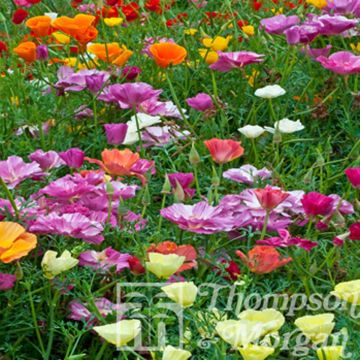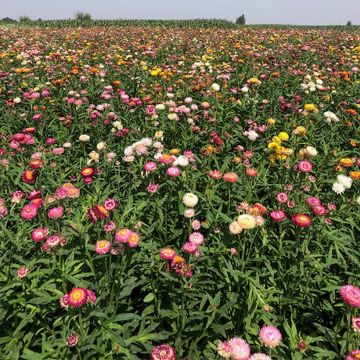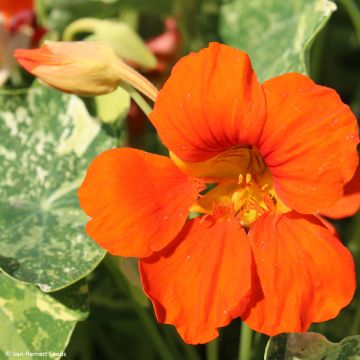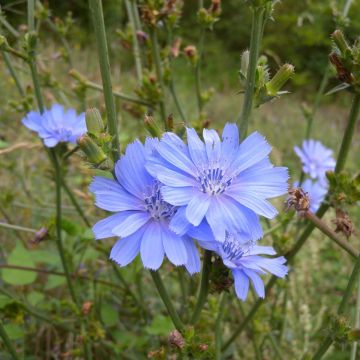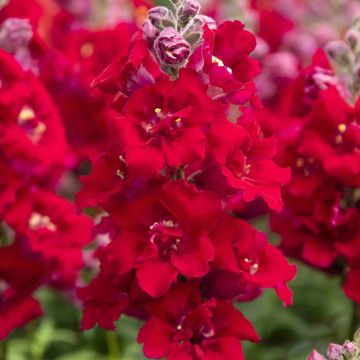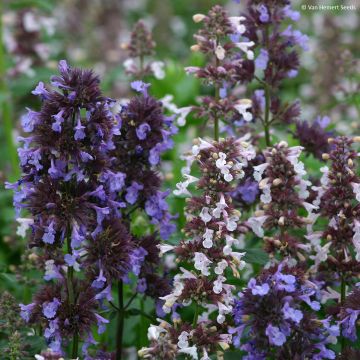

Eschscholzia californica Cream Swirl - California poppy seeds


Eschscholzia californica Cream Swirl - California poppy seeds
Eschscholzia californica Cream Swirl - California poppy seeds
Eschscholzia californica Cream Swirl
California Poppy, Golden Poppy, California Sunlight, Cup of Gold
Why not try an alternative variety in stock?
View all →This plant carries a 6 months recovery warranty
More information
We guarantee the quality of our plants for a full growing cycle, and will replace at our expense any plant that fails to recover under normal climatic and planting conditions.
Seed-only orders are dispatched by sealed envelope. The delivery charge for seed-only orders is €3.90.
Does this plant fit my garden?
Set up your Plantfit profile →
Description
This 'Cream Swirl' Californian Poppy is a variety of Eschscholzia californica with fully double flowers, in a soft cream, almost cream yellow colour. Its very pleated and wavy, silky petals resemble a paper flower or a gathered skirt. The plant is low-growing and its particularly short stems are perfect for small, short-lived but beautiful flower arrangements. It is moderately hardy, self-seeds very easily in light soil and tolerates heat, drought, and poor soils.
The 'Cream Swirl' Californian Poppy is a selection obtained from Eschscholzia californica, a short-lived perennial native to California and the southwest of the United States. There, this plant covers vast areas such as plains or rocky wild, very sunny meadows close to sequoia forests. Not very resistant to heavy frost in wet soil, it is perfectly adapted to dry and hot climates, easy to grow as an annual in all regions. Like all poppies, it belongs to the papaveraceae family.
This plant with a taproot quickly forms a clump of foliage about 25 cm (10in) in all directions. Its leaves are pinnate, finely divided and bluish-green to grey-green, which perfectly enhances the colour of the flowers. Flowering takes place from spring to summer, depending on the sowing date, even until November in Mediterranean climates. In the middle of its foliage, it produces cup-shaped, double flowers with a finely pleated texture, reflecting the sun. They open up more in full sun. Their very soft colour ranges from cream to pale yellow or ivory to pale yellow. The flowering is nectar-rich and followed by long, slender, glaucous green, 7 to 8 cm (3in) long seed heads, containing tiny seeds.
Californian poppies are happy in poor, dry soils, rockeries and coastal areas. They are versatile and can be sown in pots or flower beds, in natural areas, and in low-maintenance gardens. 'Cream Swirl' nicely complements the light blue of perennial flax, Forget-me-nots, or the beautiful Catananche caerulea. It also makes a lovely combination with the purples and mauves of stocks or Verbena. It is a very pretty cut flower, even if it is not very long-lasting.
Report an error about the product description
Flowering
Foliage
Plant habit
Botanical data
Eschscholzia
californica
Cream Swirl
Papaveraceae
California Poppy, Golden Poppy, California Sunlight, Cup of Gold
Cultivar or hybrid
Other Poppy seeds
Planting and care
Sow the seeds of Eschscholzia californica 'Cream Swirl' directly in the ground from March to May or in September, the seeds will survive the winter without damage. Sowings done in autumn will bloom in spring. Choose a very sunny spot, in any poor and well-drained, well-tilled soil. Bury the seeds 1 cm (0in) deep, in small holes spaced 15 cm (6in) apart. Cover the seeds so they do not receive any light. Water regularly, keeping the soil moist, especially during dry periods. Germination usually takes 14 to 21 days. When the seedlings are large enough to handle, space the plants to 15 cm (6in) apart.
You can also sow California poppies indoors from February to March at a temperature of 15-21 °C (59-69.8°F).
When the seedlings are large enough to handle, transplant them into pots and grow them in a cool place until the plants are large enough to be planted outside.
Cultivation:
These plants require full sun and perfectly drained, sandy or rocky soil. The soil they are planted in should be poor. In overly rich soil, the plant becomes giant and eventually topples over. In the garden, it thrives in the most inhospitable conditions, as long as it is exposed to sunlight: gravel, rocky terrain, dry slopes. It is also possible to grow them in pots and containers. Due to their taproot, these poppies do not like to be moved, which is why it is best to sow them directly in place.
Sowing period
Intended location
This item has not been reviewed yet - be the first to leave a review about it.
Flower seeds
Haven't found what you were looking for?
Hardiness is the lowest winter temperature a plant can endure without suffering serious damage or even dying. However, hardiness is affected by location (a sheltered area, such as a patio), protection (winter cover) and soil type (hardiness is improved by well-drained soil).

Photo Sharing Terms & Conditions
In order to encourage gardeners to interact and share their experiences, Promesse de fleurs offers various media enabling content to be uploaded onto its Site - in particular via the ‘Photo sharing’ module.
The User agrees to refrain from:
- Posting any content that is illegal, prejudicial, insulting, racist, inciteful to hatred, revisionist, contrary to public decency, that infringes on privacy or on the privacy rights of third parties, in particular the publicity rights of persons and goods, intellectual property rights, or the right to privacy.
- Submitting content on behalf of a third party;
- Impersonate the identity of a third party and/or publish any personal information about a third party;
In general, the User undertakes to refrain from any unethical behaviour.
All Content (in particular text, comments, files, images, photos, videos, creative works, etc.), which may be subject to property or intellectual property rights, image or other private rights, shall remain the property of the User, subject to the limited rights granted by the terms of the licence granted by Promesse de fleurs as stated below. Users are at liberty to publish or not to publish such Content on the Site, notably via the ‘Photo Sharing’ facility, and accept that this Content shall be made public and freely accessible, notably on the Internet.
Users further acknowledge, undertake to have ,and guarantee that they hold all necessary rights and permissions to publish such material on the Site, in particular with regard to the legislation in force pertaining to any privacy, property, intellectual property, image, or contractual rights, or rights of any other nature. By publishing such Content on the Site, Users acknowledge accepting full liability as publishers of the Content within the meaning of the law, and grant Promesse de fleurs, free of charge, an inclusive, worldwide licence for the said Content for the entire duration of its publication, including all reproduction, representation, up/downloading, displaying, performing, transmission, and storage rights.
Users also grant permission for their name to be linked to the Content and accept that this link may not always be made available.
By engaging in posting material, Users consent to their Content becoming automatically accessible on the Internet, in particular on other sites and/or blogs and/or web pages of the Promesse de fleurs site, including in particular social pages and the Promesse de fleurs catalogue.
Users may secure the removal of entrusted content free of charge by issuing a simple request via our contact form.
The flowering period indicated on our website applies to countries and regions located in USDA zone 8 (France, the United Kingdom, Ireland, the Netherlands, etc.)
It will vary according to where you live:
- In zones 9 to 10 (Italy, Spain, Greece, etc.), flowering will occur about 2 to 4 weeks earlier.
- In zones 6 to 7 (Germany, Poland, Slovenia, and lower mountainous regions), flowering will be delayed by 2 to 3 weeks.
- In zone 5 (Central Europe, Scandinavia), blooming will be delayed by 3 to 5 weeks.
In temperate climates, pruning of spring-flowering shrubs (forsythia, spireas, etc.) should be done just after flowering.
Pruning of summer-flowering shrubs (Indian Lilac, Perovskia, etc.) can be done in winter or spring.
In cold regions as well as with frost-sensitive plants, avoid pruning too early when severe frosts may still occur.
The planting period indicated on our website applies to countries and regions located in USDA zone 8 (France, United Kingdom, Ireland, Netherlands).
It will vary according to where you live:
- In Mediterranean zones (Marseille, Madrid, Milan, etc.), autumn and winter are the best planting periods.
- In continental zones (Strasbourg, Munich, Vienna, etc.), delay planting by 2 to 3 weeks in spring and bring it forward by 2 to 4 weeks in autumn.
- In mountainous regions (the Alps, Pyrenees, Carpathians, etc.), it is best to plant in late spring (May-June) or late summer (August-September).
The harvesting period indicated on our website applies to countries and regions in USDA zone 8 (France, England, Ireland, the Netherlands).
In colder areas (Scandinavia, Poland, Austria...) fruit and vegetable harvests are likely to be delayed by 3-4 weeks.
In warmer areas (Italy, Spain, Greece, etc.), harvesting will probably take place earlier, depending on weather conditions.
The sowing periods indicated on our website apply to countries and regions within USDA Zone 8 (France, UK, Ireland, Netherlands).
In colder areas (Scandinavia, Poland, Austria...), delay any outdoor sowing by 3-4 weeks, or sow under glass.
In warmer climes (Italy, Spain, Greece, etc.), bring outdoor sowing forward by a few weeks.











































